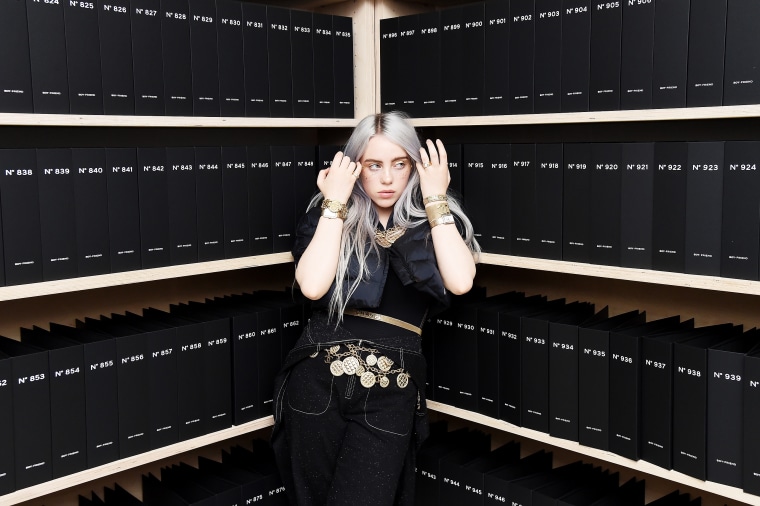In November, a 16-year-old singer-songwriter named Billie Eilish signed a co-publishing deal with Universal Music. For young pop stars of a previous era, such a contract would be a godsend.
But for this teen, it’s barely a big deal. That’s because Ellish is already a superstar with sold-out tours and more than a billion streams on Spotify. On Snapchat and Instagram, her millions of fans hang on her every move.
Eilish is the poster child for a new kind of musical stardom that bypasses traditional gatekeepers. She interacts directly with her fans, embraces fluidity in genre and gender norms and speaks openly about the mental health struggles of her generation. Eilish has never put out an album or appeared anywhere near the top of the Billboard charts — yet she’s been embraced by online communities that allow oddballs and outsiders to take creative risks and build their own messy and idiosyncratic personas.
Ellish is already a superstar with sold-out tours and more than a billion streams on Spotify. On Snapchat and Instagram, her millions of fans hang on her every move.
Two years ago, Eilish was an unknown when she heeded a request from her dance teacher and posted a soothing ballad called “Ocean Eyes” on Soundcloud. The song quickly spread through blogs and music discovery websites, eventually racking up hundreds of millions of streams. A video featuring Eilish performing a modern dance routine to the song, reminiscent of previous viral hits like Sia’s “Chandelier” and Feist’s “1 2 3 4,” increased the song’s already enormous reach.
That year, Eilish signed to Interscope Records. Under different circumstances, such a move might have come with requirements to look and act in a certain way, or to collaborate with the pop songwriting factory that produces most of today’s hits. But lately, record labels have been playing catch up when they sign Soundcloud stars like Juice WRLD or the late XXXTentacion to enormous deals; the organically grown fanbases of these musicians gives them the leverage to craft their own careers.
So Eilish continued to write all of her songs alongside her brother and producer, Finneas O'Connell, branching out in genre and theme: “idontwannabeyouanymore” is bubbling R&B; “when the party’s over” is a sparse hymnal; “see me in a crown” seethes with the macabre arrogance of Soundcloud rap. Her stylistic breadth is less surprising when you learn that her idol is Tyler, the Creator, a polymath who sings, raps, designs clothing and produces music that spans sunny alt-folk to horror rap. For older listeners, Tyler is an anomaly; for teenagers like Eilish, he’s all they’ve ever known, representing a generation of artists that don’t differentiate between the music, the fashion and the persona.
Rather than make polite, staged appearances on “Good Morning America,” Eilish appears incessantly on social media, establishing her brand of imperious-yet-relatable teendom. On Instagram she’s racked up 7.9 million followers who eagerly watch her androgynous outfits oscillate between haute couture and skater trash: she models her oversized hoodies, arachnoid bangles, tracksuits, bomber jackets and mom jeans with equal aplomb. On Snapchat, Eilish has her own filter and posts herself swaddled in blankets or making double-chin faces. On YouTube, she releases an elegant, synchronized dance video one day and then gulps down a spider on the next. You can even find her on Netflix, anchoring the soundtrack of the breakout teen drama “Thirteen Reasons Why.”
Eilish knows these platforms are all entry points for newcomers, who hopefully eventually make their way to her Spotify page. There, she’s accrued over a billion plays without having put out a proper debut album, with the “Thirteen Reasons Why” cut “lovely” leading the way with 260 million streams. The fact is the traditional album has been in sharp decline for several years, with album sales in 2018 half the size they were just three years ago.
But perhaps the most important way Eilish reflects her generation is with her unflinching honesty about mental health. Studies show that Gen Z is the loneliest generation; children of the recession, they’re anxious about everything from school shootings to cyberbullying. And while Eilish shows off her wacky side online, she spends equal time talking about her own history of depression, helping to destigmatize it. In an extremely poignant pair of Vanity Fair interviews conducted one year apart, Eilish paints a bleak picture of what she’s learned after a year in the limelight: “We’re all sad as hell. All these artists — we’re sad as ****.”
When she imbues her music with this candid pain, mixing in her wicked sense of humor, aesthetic vision and varied musical influences, the results are stunning. “bellyache” tells the story of the mental breakdown of a murderous outlaw using dreamy harmonies, folksy guitar strums, trap hi hats and a throbbing electronic bass. In the music video, she prances through a hallucinatory desertscape before her Wild West fantasy comes crashing down. It’s a scattered but breathtaking package that shows what kind of art Gen Z can create own their own — without older tastemakers getting in the way.

